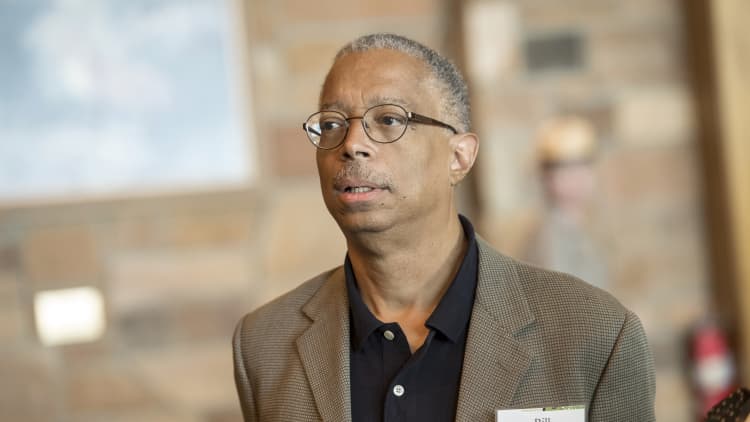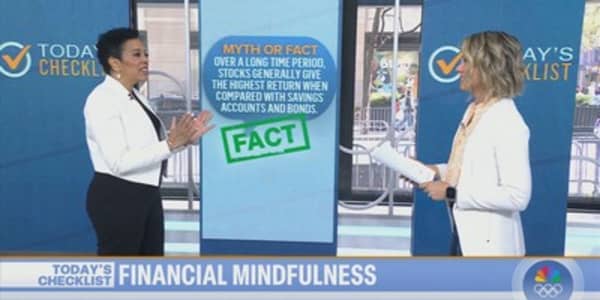
The disparity in wealth between Black and white households in the U.S. — referred to as the racial wealth gap — has paved the way for a significant retirement savings shortfall that is only growing, according to Thasunda Brown Duckett, president and CEO of TIAA.
"There is a real problem," she said Tuesday in a conversation with CNBC senior personal finance correspondent Sharon Epperson during CNBC's Equity and Opportunity summit. TIAA is a Fortune 100 financial services organization serving some 5 million workers in the academic, cultural, governmental, medical and research fields.
Many older Americans are concerned about their retirement security. However, Black households are at a greater risk of being unable to maintain their standard of living in retirement compared with their white counterparts, several studies show.
According to the U.S. Federal Reserve's latest Survey on Consumer Finances, 57% of white families had savings in retirement accounts, compared with only 35% of Black families and 26% of Hispanic families.
And while white families had, on average, a retirement account balance of $168,000, not including pensions, the average balances for Black and Hispanic families were $38,300 and $27,300, respectively.
"All Americans run the risk of running out of money, and as you look at minorities or women, that number is even more pronounced," Duckett said.
How to overcome structural and systemic issues
For starters, fewer Black and Hispanic households have or use employer-sponsored retirement plans. About 64% of Hispanic workers, 53% of Black workers and 45% of Asian-American workers have no access to a workplace retirement plan at all, according to AARP.
Tax breaks for retirement plans, such as 401(k) plans and individual retirement accounts, may be further widening the gap, according to a separate analysis from the Tax Policy Center.
All employers, including small business owners, must provide access to a workplace plan to make it easier to save, Duckett said, so employees are "taking the necessary steps to have a secure retirement, while managing the high-stress environment we are dealing with today."
For those who are in business for themselves and don't have a 401(k) or other workplace retirement plan, it's important to use alternative savings tools such as an IRA, she said.
"We have to make sure that everyone is participating."
Financial education is 'critical'
To further address the racial retirement gap and work toward building generational wealth for Black Americans, Duckett said, financial literacy "absolutely is critical."
"When you know better, you do better," she added.
There is an important role for schools to play, she said, but a financial education should continue in the workplace.
And "it can't stop there," she added. "It's not enough to just have it; it is our responsibility to make sure that our employees are engaging with the information in a way that they are taking action."

Auto-enrollment and auto-escalation features can also help ensure all workers can take full advantage of matching contributions, when available, and stay on track with their long-term goals.
Finally, Duckett said, families should meet with a financial advisor to fine-tune their balance sheet so they are able to divert a portion of their salary every month to a separate rainy day fund. This will prevent having to tap retirement accounts in case of an unexpected financial shock or emergency expense.
"It's not what you make, it's what you keep," she said.
Ultimately, that's what will allow Black households to "transfer wealth, and not debt, to future generations," Duckett said.






